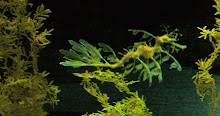I recently received a package of reprints for a scientific paper I contributed to. The paper was on colouration in two neotropical butterflies. Having worked for so long in the field of colouration (sic), at the moment, I am in two minds about revisiting projects in the subject, let alone, blogging about them. In this case, I really like some of the underlying scientific idea, so it seemed worth writing a popular science version of them. This was originally supposed to be a teaching aid/ class-discussion resource for educational purposes, so you will have to excuse me if the tone is a bit didactic in places:-
Mercedes atnius and
Morpho rhetenor are two day-flying butterflies that live in the same tropical habitat (pristine forests of Guyana and in the lower Amazon basin in South America). When observed with the naked eye, museum specimens of these insects seem to exhibit an identical blue colouration, but this is deceptive because living butterflies of different species flap their wings differently, giving rise to various optical effects. Dead animals, which look alike in a museum case, may look very different from each other when they are alive, in the wild.
Different species vary in their wing-beat frequencies and this variation is not always for reasons of aerodynamics or to conserve energy. In fact, in some butterflies, characteristic wing-beat frequencies have evolved which are known to be aerodynamically costly but which have a role in signalling to other butterflies.
We should consider this signaling for a moment- it is as if the pattern of pigment on the wing in these butterflies acts as a coloured display, which is alternately visible and not, as the wings open and close. This means that the pattern of display seen over time depends on the wing-flap frequency, allowing butterflies to distinguish between other members of their own species and similar species with the same wing colouration. This phenomenon has already been investigated in some butterfly species, but the situation is much more complicated in the butterflies
Mercedes atnius and
Morpho rhetenor .
There are essentially three ways in which living organisms can produce colouration: by using pigment, by using bioluminescence (carrying out chemical reactions that give off light of certain colours) or by reflecting certain colours (wavelengths) of incoming light and not others. This last method- better known as “structural colouration” -is the cause of the bright colours in metallic beetles, the feathers in a peacock’s tail and the shiny metallic blue colouration in many butterflies of the rainforest.
Mercedes atnius and
Morpho rhetenor are two such butterflies. They both have a vivid metallic blue colouration on the upperside of their hind-wings’ surface, which "flashes" as the butterfly is tilted.
Detailed examination of their wings reveals that, like all butterflies they are covered in scales. However, within the scales in these two butterflies are masses of tiny, highly organized and repetitive structures. Because of their precise geometry and dimensions, these structures are able to interfere with any light landing on them. They amplify certain colours (wavelengths) of light, whilst colours either pass through the structure or disappear within it. In fact, the wing structures reflect and amplify blue light, which is why the butterflies appear blue. The wings reflect light much more strongly in some directions than others. (the reflected light is highly directional)
When flying, a butterfly with this type of structures in the wing scales can produce some arresting visual effects, because not only does the pattern on its wings appear and disappear, or flicker, but at certain, precise, angles, there are also bright flashes as the wings reflect light very strongly.
This may sound complicated enough, but it is not the end of the story because it is not just the strength of reflection that varies with angle, but also- slightly- the colour of the light reflected. The result of this is that there are three visual effects occurring simultaneously in the butterflies
Mercedes atnius and
Morpho rhetenor. With each wing flap, the coloured display from the wings of these species will not only become visible or not (flicker) as the wings open and close, but it will also vary in colour as the wing angle changes and in intensity (show bright flashes).
Because the consequences of wing-flapping had not previously been investigated in species like these (with colour- producing structures in their wings) this scientific paper discusses these flashes. In particular, it considers the idea that their frequency could be a way for these butterflies to recognise other individuals of the same species. Obviously, this is a phenomenon that will require more detailed discussion in the future, but this paper makes a start by studying museum specimens of these two butterflies, in order to understand the signals they emit better. All of which is a necessary prelude to investigations into the flicker phenomenon and to studies of these "flashes" in the wild and their behavioural significance.
This study was published as “Morpho-like optical phenomenon in the neotropical lycaenid butterfly Mercedes atnius”, (Zsolt Balint, Serge Berthier, Julie Boulenguez & Victoria Welch,) in the journal Atalanta (sic), 40 (1/2), 263-272, Wurzburg, 2009 (ISSN 0171-0079).














